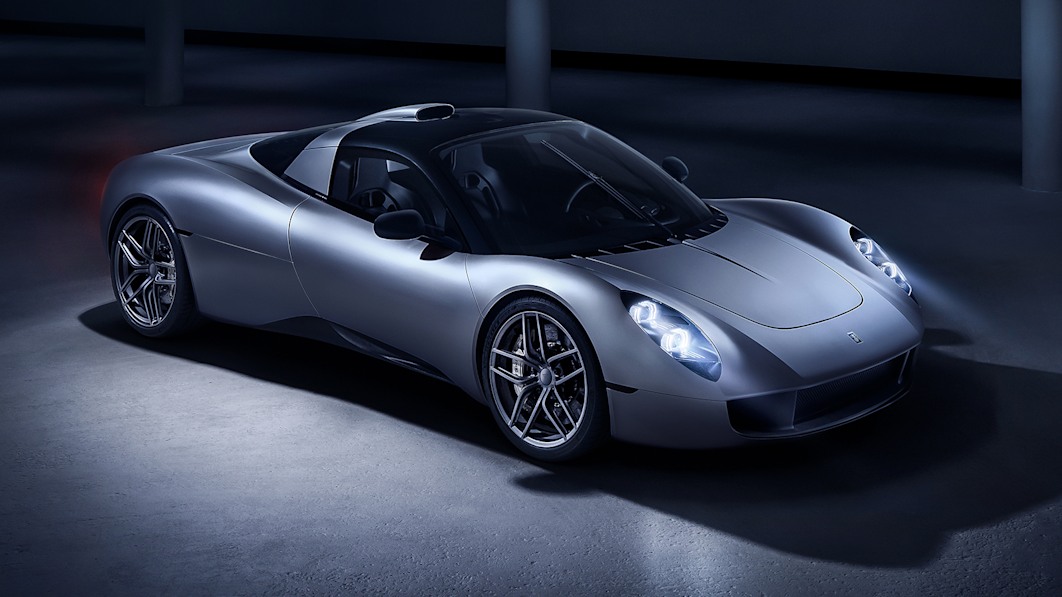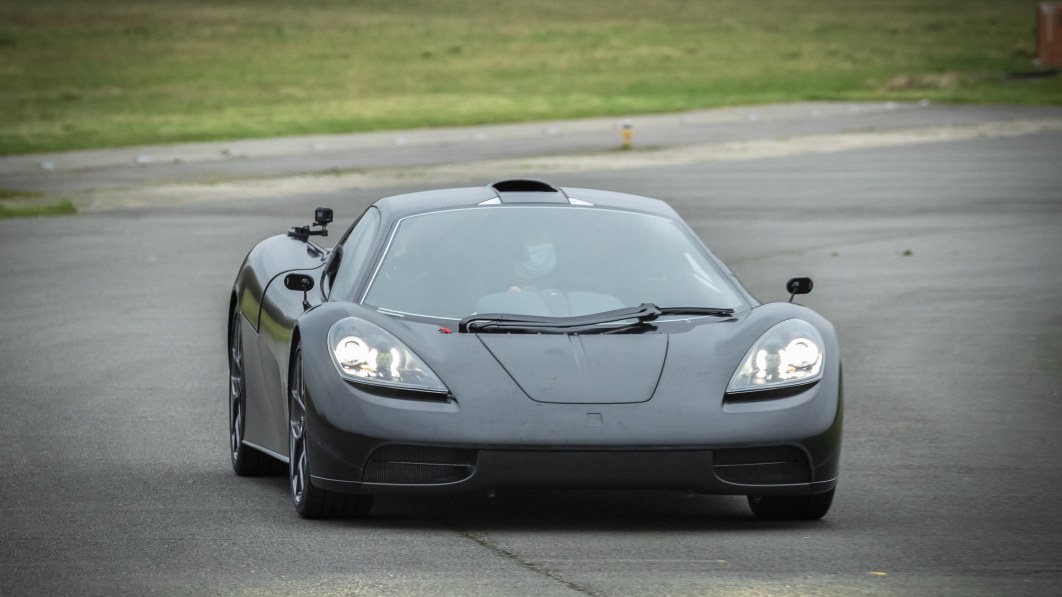Gordon Murray Automotive has posted to social media a teaser of its next supercar. It will be the second car to emerge from the company founded by the legendary race car engineer who created the McLaren F1. The follow-up to the incredible T.50 and T.50s is scheduled for a release in three weeks. So far all we have is a name, the T.33, which the teaser shows us as an emblem in yellow.
Notably, however, GMA refers to it as a “supercar GT” indicating that it’ll be more of a grand tourer than the hard-core sports-oriented T.50. As such, it may be a tad more relaxed than the manual-shift, 654-horsepower, 344-pound-foot T.50.
Given Murray’s fondness for mid-mounted V12s, we think it’s likely that the T.33 will be powered by some version of the 3.9-liter Cosworth V12 developed for the T.50. As a GT, though, perhaps the T.50’s 1+2 seating position will give way to a more relaxed side-by-side configuration.
One thing we do know for sure is that the T.33 will be the first car to emerge from GMA’s new $68 million global headquarters in Windlesham, Surrey, U.K. The facility will also house an R&D center, museum, manufacturing and service hub, and test track.
In a statement, Murray said, “We will have many important milestones for our new headquarters over the next two years. But one of the most important will be on 27 January when we reveal the first Gordon Murray Automotive vehicle to be manufactured there. We’re all extremely excited to be revealing such a significant car to the world in just three weeks from now.”
We’ll be tuning in at 12 p.m. Eastern on January 27.






